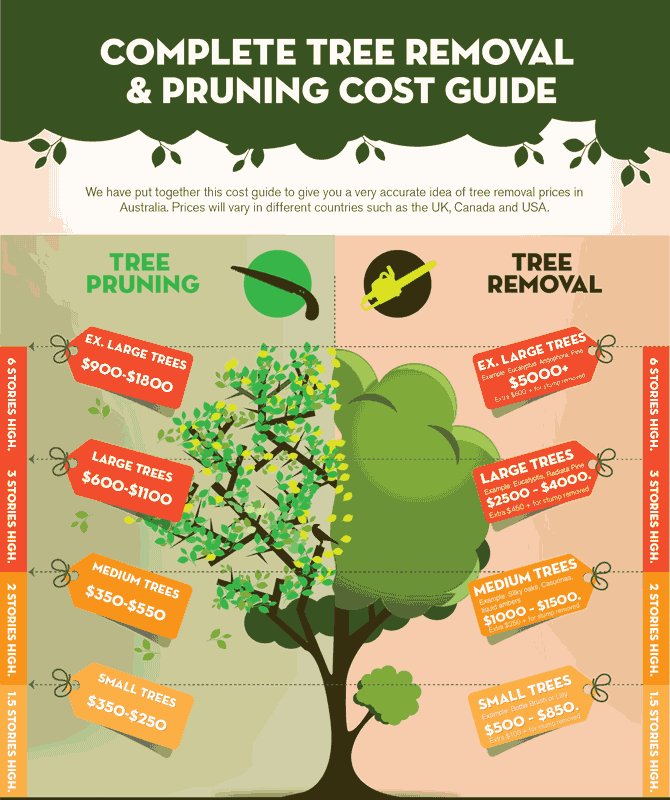Recognizing The Requirement For Tree Removal: An Overview For Homeowners
Recognizing The Requirement For Tree Removal: An Overview For Homeowners
Blog Article
Authored By-Hollis Lester
Trees include appeal and value to home, yet they can additionally position a threat throughout extreme weather condition occasions. If a tree has stopped expanding, is exhibiting noticeable fungal development, or has a leaning trunk, it must be gotten rid of by an expert to avoid residential or commercial property damages and injury.
To get more information, go to a home owner source reasonable co-hosted by HPD, the Center for NYC Neighborhoods, and Brooklyn-based housing partners this night in Bedford-Stuyvesant. The occasion will include the Property owner Handbook, a brand-new guide to assist homeowners browse the duties of owning a home.
1. Dead or Dying Branches
Trees are an important part of your home's landscape, using color and elegance. They additionally offer sanctuary for wild animals and generate oxygen, yet even healthy trees can experience health problems that may necessitate their removal. Dead or dying trees aren't simply undesirable, they can be unsafe. Their branches could drop throughout a tornado, causing expensive residential property damages and injuries.
When a tree's branches begin to die, it suggests that its framework is beginning to break down. If most of its branches are dead, it is most likely time to remove it.
Try to find an absence of brand-new growth, bark peeling, open wounds or cavities, fungis growing on the trunk or origins and a general appearance of decay in the entire canopy. These indicators of infection can suggest a serious issue that will require expert tree solutions to fix.
2. Leaning Trunk
While it's typical for trees to lean periodically because of phototropism, if a tree has a hazardous or severe lean that's not because of natural processes - it could be a sign that the tree requires to be gotten rid of. If arborist degree is favoring a power line, home, lorry, play framework or any other area that could be dangerous to people if it falls, after that getting in touch with a professional tree service for elimination ought to be a top priority.
see page 's also vital to look for any sudden changes in a tree's leaning as it can show damage to the roots or trunk that may lead to dropping. This is especially true during stormy weather, because high winds and rain-soaked soil can trigger a lean to change promptly. Normal surveillance, specifically throughout and after storms can assist homeowners acknowledge potential problems with their trees so they can call an arborist for a complete assessment.
3. Parasite Infestation
Some pest infestations, such as wood-boring bugs like emerald ash borer or sap-suckers like range insects, are so extreme that they can cause a tree to pass away. The very best method to stop pest infestation is to monitor your trees on a regular basis. Look for spots, openings, or stainings in the leaves and bark. Examine the trunk for cracks and indicators of insect damage, such as passages or tracks.
If a tree comes to be too infested with pests, or is close to a home or high-voltage line, an arborist might suggest elimination. If a leaning tree creates a new, unstable lean, an arborist will likely advise removal also to make sure the safety of individuals and home. If a damaged or dead tree constantly sheds excessive branches, it is an indication that it is time to remove the tree. If a tree continues to shed branches for a prolonged amount of time, it can lead to structural troubles and possible residential property damages.
4. Damaged Trunk
Trees are a beautiful and fundamental part of our landscape, but they do call for normal like keep them healthy and risk-free. If a tree is harmed beyond repair it is likely time for it ahead down.
Seek signs of damages to the trunk, consisting of upright fractures, seams, dead branch stubs, visible wounds or open tooth cavities and extreme tree-rot. The visibility of fungi at the base of the trunk is another cautioning sign. Fungi might suggest that the phloem and xylem (life-support tissues) are endangered, allowing for the spread of disease or a future failing.
Additionally, think about whether the tree has actually stopped expanding. Healthy and balanced trees will certainly have new development annually, which might show up as buds or branches growing and prolonging. If you do not see any brand-new growth, it's an excellent idea to have an arborist examine the tree and follow their suggestion for elimination. A passing away or harmed tree can drop and create property damages.